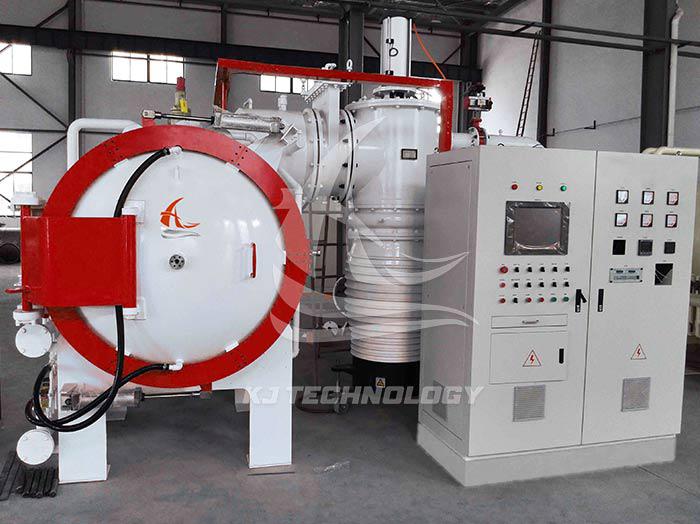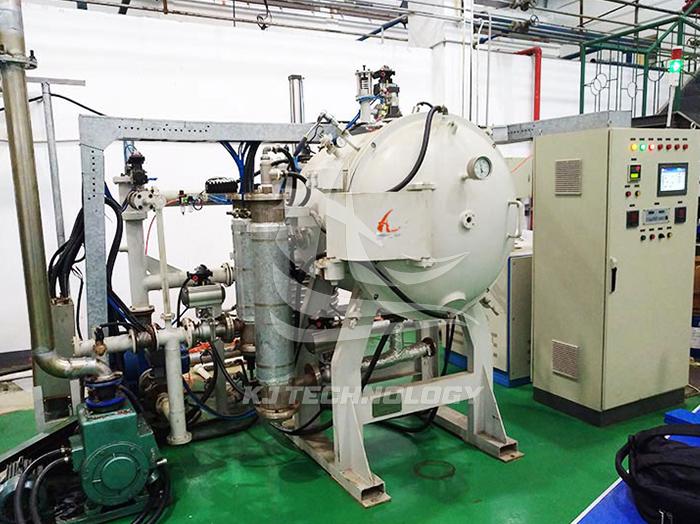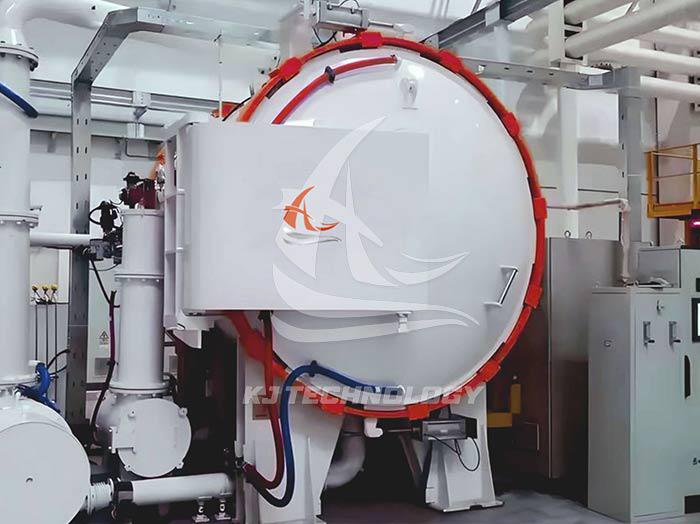Maintenance knowledge of high-temperature vacuum brazing furnace
 03-24-2025 Author: KJ technology
03-24-2025 Author: KJ technology
The maintenance knowledge of high-temperature vacuum brazing furnace is crucial for ensuring the normal operation of equipment, extending equipment life, and improving production efficiency. Here are some key maintenance knowledge and suggestions:
1. Daily inspection and maintenance
Appearance and Cleaning
Keep clean: The exterior and interior of the equipment should be kept clean to avoid the accumulation of dust and debris. When wiping the inner wall of the furnace, use a cloth without moisture and avoid using a cloth with non vacuum oil.
Check sealing: Regularly inspect sealing parts such as furnace doors and flange connections to ensure good sealing and no air leakage.
Cooling system
Cooling water: The water pressure of the cooling water should be maintained between 0.1 and 0.2 MPa, and the outlet temperature should not exceed 45 ℃. Ensure smooth circulation of cooling water, regularly inspect and clean the cooling water pipeline to prevent scale and blockage.
Return water volume: Regularly check the return water volume of each part to ensure that there is sufficient cooling water for each part during operation.
Gas System
Protective gas: The purity of the protective gas filled should not be less than 99.99%, and the water and oxygen content should also meet the equipment requirements. Before starting each furnace, check the capacity of the protective gas cylinder to avoid insufficient gas.
Compressed air: The pressure of compressed air should be maintained between 0.4 and 0.5 MPa. For pipelines with compressed air, the drain valve should be opened daily to release accumulated water.
electrical system
Voltage stability: The overall voltage of the equipment should be ensured to be within the range of 350-420V, and the three-phase voltage should be balanced.
Electrical connectors: The electrical connectors of the electrical system should be kept clean and tight, and each electrical connector should be checked for tightness before starting the furnace.
2. Regular maintenance and upkeep
vacuum system
Vacuum pump:
Regular oil change: Mechanical pumps and Roots pumps should have regular oil changes and refills, and the oil cup of Roots pumps should always be filled with oil. When changing the oil, be sure to drain the waste oil completely. Different types and brands of vacuum pump oil should not be mixed for use.
Check sealing: Regularly inspect the shaft sleeve sealing ring, operation condition, pumping speed, and maximum vacuum degree of the vacuum pump.
Treatment of oxidation layer: When changing the oil of the diffusion pump, if there is an oxidation layer inside, it should be cleaned before replacing with new oil.
Leak detection and maintenance: Regularly conduct leak detection on the vacuum system, check whether the valve switches and seals are normal. When the equipment is not used for a long time, baking treatment should be carried out. The baking temperature of the aluminum vacuum brazing furnace needs to be 750 ℃, and the insulation time should be 2 hours when the vacuum degree is less than 10-3 Pa; The baking temperature of the stainless steel vacuum brazing furnace needs to be 1200 ℃, and the insulation time should be 1 hour when the vacuum degree is less than 10-3 Pa.
Heating system
Check the heating element: Regularly inspect the heating element for ignition, volatilization, cracking, detachment, insulation damage, etc. If necessary, replace it in a timely manner.
Temperature uniformity: Raise the temperature to 600 ° C~800 ° C (700 ° C~1200 ° C for high-temperature brazing) in an empty furnace state, and check the temperature uniformity after insulation to ensure that the average temperature does not exceed ± 3 ° C (± 5 ° C for high-temperature brazing).
Cleaning the heating chamber: Regularly clean the rust, dust, and other impurities inside the heating chamber to prevent impurities from falling onto the electric heating element and causing short circuits or damage.
air cooling system
Check the heat exchanger: Regularly check whether the flow rate, water pressure, and inlet and outlet water temperature of the heat exchanger meet the standards.
Cooling test: Test the ability of the highest temperature of the empty furnace to drop to the lowest temperature that the equipment can reach within a certain period of time.
Locking mechanism
Check the cylinder: Check if the furnace door cylinder stroke is in place, if the air pressure is normal, if the action is smooth, and if there is any air leakage in the cylinder.
Check the locking ring: Check whether the locking ring is deformed, whether the bearing is damaged, whether the ring rotates flexibly, and whether the limit is normal.
Inflation and deflation system
Check valves: Check whether there is any air leakage in the electric inflation valve, electric pressure divider valve, electric air supply valve, manual air release valve, etc.
Proofreading pressure gauge: Proofreading the pressure gauge of the pipeline and eliminating whether there is air leakage at the flange seal and welding of the pipeline, and testing the pressure of the pipeline.
safety valve
Pressure testing: Regularly conduct pressure testing on safety valves to ensure that the equipment can open normally in case of overpressure.
Switch inspection: Check whether the proximity switch, pressure gauge output point, etc. are normal and eliminate safety hazards.
3. Other precautions
Avoid overloading: The maximum operating temperature of a vacuum brazing furnace refers to the surface temperature of the heating element allowed in vacuum, not the temperature of the heating substance or the temperature around the heating element. Attention should be paid to avoiding overloading during use.
Prevent heating element reaction: Avoid direct contact between the heating element and reactive substances such as copper, aluminum, zinc, tin, lead, etc., to prevent the formation of "pits" on the surface of the electric heating element due to erosion, resulting in a smaller cross-section, overheating, and burning.
Regularly calibrate instruments: Regularly verify and calibrate instruments such as vacuum gauges, temperature controllers, thermocouples, voltmeters, ammeters, etc. to ensure accurate measurements.
Emergency measures: In case of water or power outages during high temperatures, immediate measures should be taken to prevent equipment damage. For example, it is best to install a backup water tank or connect the water supply pipe to the equipment to cope with water outages.
Professional operation: All maintenance work should be carried out by trained professionals to ensure correct and safe operation.
Records and archives: Establish operation records and repair archives for the vacuum brazing furnace, calculate the accumulated working time of operation, in order to timely grasp the trend of equipment technical status changes and prepare repair parts in advance.
By following the above maintenance knowledge and suggestions, it is possible to ensure the long-term stable operation of the high-temperature vacuum brazing furnace, improve production efficiency, and reduce maintenance costs.








